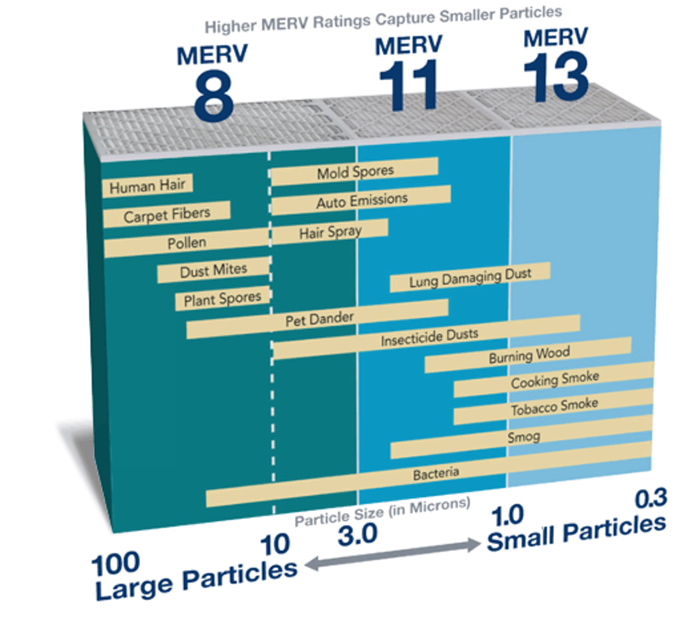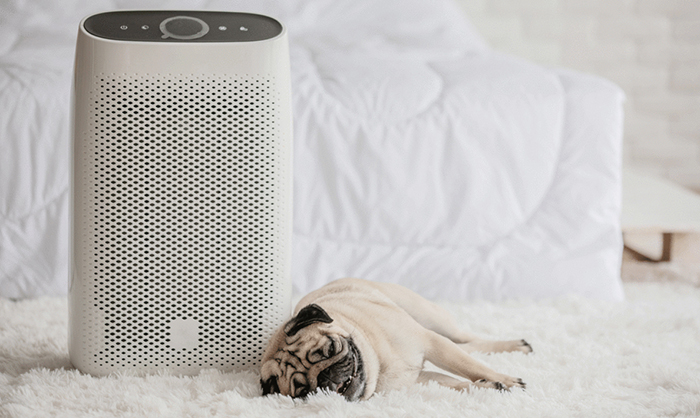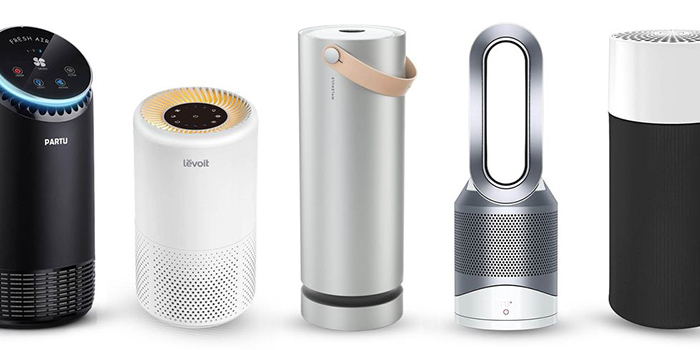aaah..aaah..aaachooo…! 😬 – Bless you!
Let’s Clear the Air! “Rethinking our homes” comes with a list of ideas to increase our well-being and happiness while we’re spending more time together. By taking a close look at the inside and outside of our homes, we are discovering many simple best practices that come with a slew of benefits including, energy efficiency and a fresh outlook on the health of our abodes. At the top of our list for such practices, we’re sharing some tips on how to improve interior air quality.
Air purifying systems are nothing to sneeze at. 😤 With cooler temps approaching, eventually we’ll shift the HVAC unit from COOL to >HEAT. Change of season, change of filters. Before you toss one in your cart the next time you’re at the home improvement store, consider these options and find what is best for you:
• Fiberglass Filter: disposable and the most affordable. They work better in protecting your air conditioning system than screening dust and pollutants in the air.
• Pleated Filter: made of polyester fabrics or cotton folds, pleated air filters are effective in filtering dust and other pollutants. Check the MERV (???) ratings and choose the right one for your home environment. Read on to find out what MERV stands for…
• Washable Filter: more expensive up front but yield savings in the long run. They can be removed and cleaned regularly, however be sure to let it dry to avoid any mold growth and bacteria buildup.
• Filter: uses electrostatic charge to trap dust and airborne particles. Some filters of this type are washable, which is a double bonus.
• HEPA Filter (High Efficiency Particulate Air Filter): best for people with allergies and prone to respiratory difficulties, as they can screen up to 99.97% of contaminants. Nice!
• UV Filter: these types of filters, use ultraviolet lights to kill bacteria and viruses in your home. Although less efficient in screening dust and other pollutants, they are good at combating microorganisms which are also dangerous to your health. Hmmmmmm.
* Disposable filters should be changed often and per manufacturer recommendations, but if you are having construction work done or other unusual activities inside the home that may affect air quality, it would not hurt to change them with more frequency. A clean filter gives you peace of mind and helps prolong the efficiency and life of your HVAC system.
Did anyone call MERV? Who? What? 🤔
MERV stands for Minimum Efficiency Reporting Value, and is a measure of how well a filter removes particulates from the air. In that way it’s akin to the more familiar HEPA rating used on air purifiers. But MERV is different in some key ways. First, instead of being a simple pass-fail measure like HEPA (it’s either HEPA-rated or it’s not), MERV ratings fall on a scale from 1 to 20, with higher numbers indicating better performance.
Let’s break it down.
MERV 1 to 4 (and unrated): these are the cheapest and most filters. They trap relatively large, particles larger than 10 microns—including pet hair (but not dander), carpet fibers, and heavy dust, but have little to no impact on fine particulates like pollen and smoke. Not ideal if you need to ease respiratory issues. However, they prolong the life of your equipment and help keep it running efficiently in the heating and cooling seasons.
MERV 5 to 7: created as an improvement on the basic MERV 1 to 4 filters and designed to also filter out midsize particles (3 to 10 microns, which includes most pollen and mold spores) that could encourage mold growth on heating/cooling coils.
MERV 8 to 13: this category is best for indoor air quality. They are good to excellent at removing fine particulates (as small as 0.3 to 3.0 microns in diameter, including smoke and exhaust particles and bacteria), plus anything larger. Filters in this range can significantly reduce indoor fine-particulate pollution and alleviate some respiratory ailments.
MERV 14 through 16: these are specialized filters that require a purpose-built HVAC system and are generally not used in homes.
Other Fancy Technology worth checking out:
• UV Light Tubes: UV light tubes inside your HVAC system have been shown effective in killing sterilizing the plenum and duct cavities. They are often used in hospitals, restaurants and grocery stores. There are two types of UV lamps, Coil Sanitizing and Air Sanitizing.
• Coil Sanitizing Lights: coil UV lights are the most common HVAC sterilizing lights and come in single-lamp and dual-lamp models. Coil sterilization lights are installed where they can shine directly onto the surface of the coil, and they are left on continuously.
• Air Sanitizing Lights: this type of HVAC germicidal lights come in stick and U-shapes, and are installed in the ductwork that brings the return air to the system. This is called the Plenum. Their purpose is to kill airborne germs and mold.
Air Purifiers: there are stand-alone units that come in all shapes and sizes. Most have what’s known as a mechanical filter, and are generally very effective.
• HEPA purifiers remove about 99.96 percent of all airborne particles pollutants. They can be loud, and some models are quite large.
• Ion purifiers emit negatively charged ions that attract positively charged ions in the air and causes them to bond with metal plates that you clean and use again. They are effective, and quiet, but they create ozone in the process, which has its own health concerns!
Think through the options, the size of the room, and how often you expect to run it, before making a purchase.
We hope you found our tips helpful as we embark on fall with a fresh new outlook on keeping our families safe and our homes a healthy, happy haven. Stay tuned for our next post all about windows…Hang in there.
Many thanks to Parenting and Did You Know Homes blog for images, Rescue Heat and Air, NY Times Wirecutter, and PickHvac for content.












